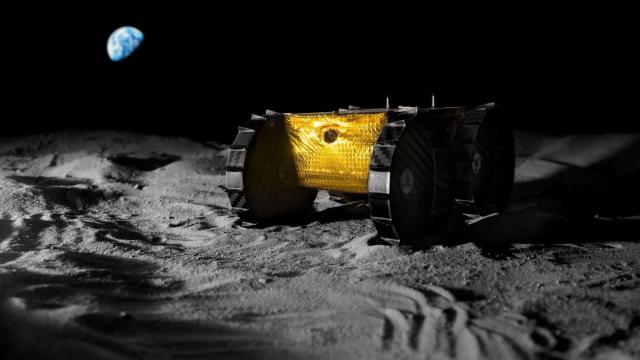Astrobotic’s Peregrine lunar lander is slated to blast off on Monday, January 8, carrying an assortment of goodies, including cutting-edge scientific rovers, bitcoin, and a piece of Mount Everest. No doubt, this ain’t your grandfather’s Moon mission, as the era of commercial space deliveries is now upon us.
The Moon will never be the same, thanks to a NASA-funded initiative meant to foster a new era of lunar exploration and enable private companies to deliver stuff to the lunar surface. This opens the door to a diverse range of non-scientific payloads, such as artworks, memorials, databanks, and a myriad of other imaginative items, effectively transforming the Moon into a new frontier for both scientific exploration and creative expression—for better or worse.
It all starts on Monday, January 8, at 6:18 a.m. AEDT, when United Launch Alliance’s Vulcan Centaur is expected to lift off from Cape Canaveral, Florida, on its maiden voyage. Perched atop the rocket, Astrobotic’s Peregrine lander aims to make history by becoming the first commercial spacecraft to land on another celestial body and the first U.S. spacecraft to touch down on the Moon since the Apollo missions. Well, if the scheduled landing in late February goes as planned; we must remember there are no guarantees, especially given the Moon’s reputation for taking no prisoners.
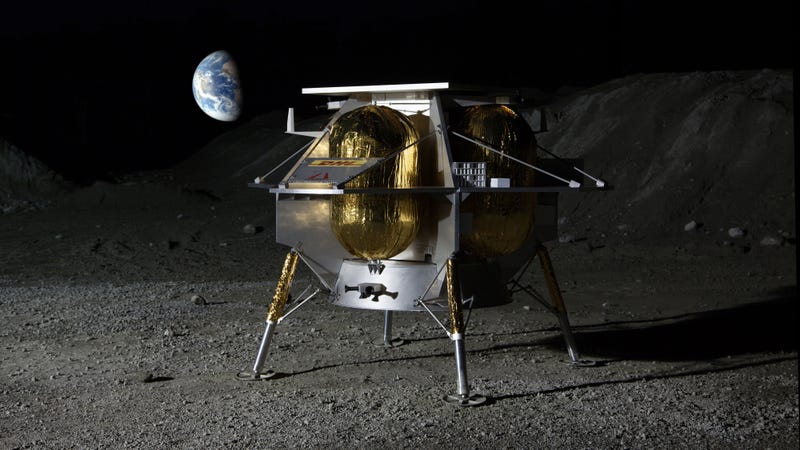
Pittsburgh-based Astrobotic built and operates the 2,829-pound (1,283 kilogram) Peregrine lander, which is aiming for a soft landing on the Moon at the Gruithuisen Domes—a cluster of volcanic formations in the Sinus Viscositatis region (meaning “Bay of Stickiness”). This location, chosen for its unique geological characteristics, promises to shed light on the Moon’s history and composition.
Delegating deliveries to the Moon
Peregrine is packed with payloads from both government and commercial partners. NASA’s Commercial Lunar Payload Services (CLPS) initiative, part of the Artemis program, collaborates with various U.S. companies to transport scientific and technological payloads to the Moon. These companies, tasked with responsibilities ranging from payload integration to lunar landing, are currently operating under contracts worth up to $US2.6 billion through 2028. Astrobotic and Intuitive Machines (which is also planning to send a lander to the Moon in 2024) are set to launch lunar landers under NASA contracts worth $US79.5 million and $US77 million, respectively.
These collaborations are meant to support the space agency’s ongoing lunar exploration efforts and the preparation for future human missions to the Moon, and to do so affordably. Indeed, a key goal of Artemis is to make the Moon a sustainable place for long-term human presence and a springboard for future deep space exploration. CLPS is one of many initiatives that NASA has launched to foster commercial partnerships in space exploration, and with Astrobotic’s Peregrine Mission One (PM1), this vision is taking a major step forward.
Over 20 different payloads, including a diverse suite of scientific instruments, technologies, mementos, and other payloads from six different countries, dozens of science teams, and hundreds of individuals, are destined for the lunar surface, with a significant portion belonging to NASA. Though many have scientific purposes, others are distinctly non-scientific. But seeing as NASA helped to fund the mission, we’ll start with them.
NASA’s lunar goodie bag
The upcoming lunar mission, equipped with a diverse selection of scientific instruments belonging to NASA, is set to deepen our understanding of the Moon. The space agency’s Laser Retro-Reflector Array (LRA) will use laser beams to accurately measure the distance between the Moon and Earth, while its Linear Energy Transfer Spectrometer (LETS) will measure radiation at the lunar surface, enhancing astronaut safety during future missions.
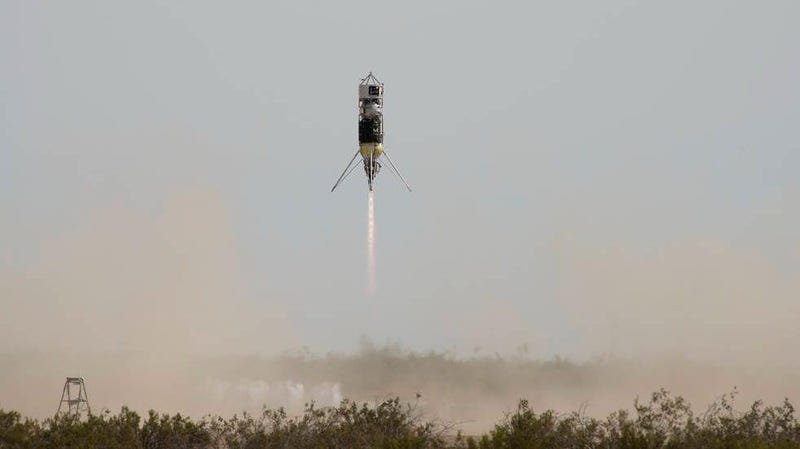
The Near-Infrared Volatile Spectrometer System (NIRVSS) will analyze the lunar surface, identifying water and other substances. By examining lunar soil, the Peregrine Ion-Trap Mass Spectrometer (PITMS) aims to reveal the Moon’s composition, while the Navigation Doppler LIDAR (NDL) is designed to deliver accurate altitude, speed, and directional data to the guidance, navigation, and control subsystem, ensuring the safe landing of Astrobotic’s Peregrine lander on the Moon’s surface,” according to the space agency. Lastly, the Neutron Spectrometer System (NSS) will hunt for hydrogen to indicate potential water sources. Together, these tools mark a significant step in lunar exploration and potential habitation.
Other gadgets gathering on the Moon
Mexico and Germany are also sending scientific projects to our lone natural satellite. Mexico’s mission, its first to the Moon, is called Colmena, and it involves a swarm of five tiny robots that should self-assemble to form a single solar panel. The German-built M-42 radiation detector will measure and analyze the levels of cosmic radiation during its journey to the Moon and while on the surface, providing crucial data for assessing the safety and feasibility of future human lunar missions.
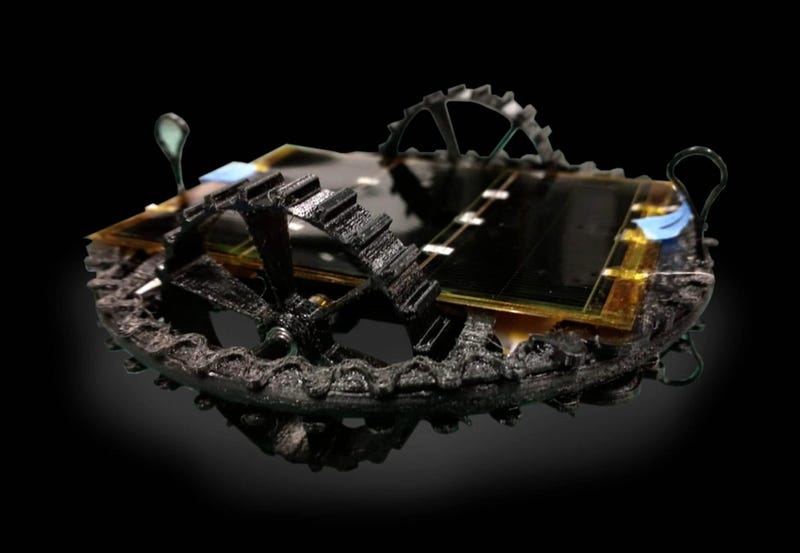
The 5-pound Iris Lunar rover, developed at Carnegie Mellon University, is no larger than a shoebox, but once it gets rolling, it’ll become the first U.S. robot to work on the Moon. The rover’s job is to showcase its mobility, capture images for geological sciences, and use radio signals to assist with its localization. “Hundreds of students have poured thousands of hours into Iris,” Raewyn Duvall, commander of the Iris mission, said in a statement. “We’ve worked for years toward this mission…Iris will open up lunar and space exploration by proving that a tiny, lightweight rover built by students can succeed on the moon.”
Carnegie Mellon is also sending a time capsule to the Moon. Called MoonArk and weighing roughly 8 ounces, the four-chamber time capsule will carry a diverse collection of items, including hundreds of images, poems, music pieces, nano-scale objects, and samples from Earth. “It is designed to direct our attention from the Earth outward, into the cosmos and beyond, and reflects back to Earth as an endless dialogue that speaks to humanity’s context within the universe,” according to a university statement.
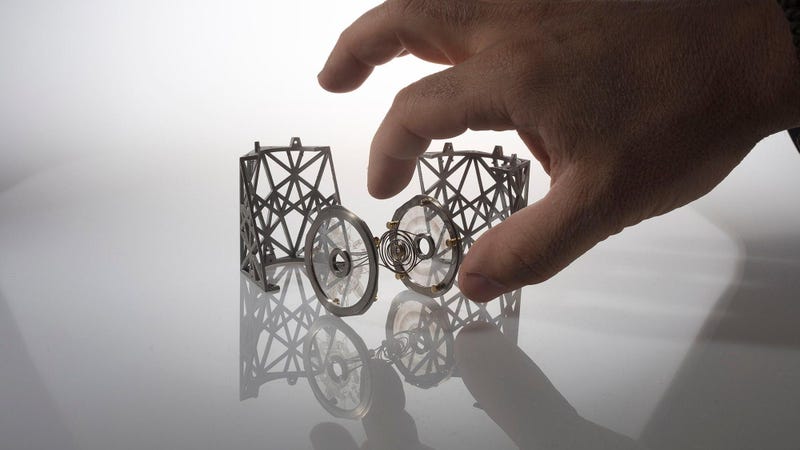
Also aboard Peregrine is Arch Mission Foundation’s Library II, a disc packed with more than 60 million pages of information, including English Wikipedia, selected records from the Internet Archive, a linguistic key to 5,000 languages, and various private collections. The library is printed onto nickel NanoFiche, an “ultra-durable analog nano storage medium,” according to Astrobotic.
The DHL MoonBox contains more than two dozen capsules filled with various items, including photos, novels, student projects, and even a piece of Mount Everest. Hungary’s “Memory of Mankind (MoM) on the Moon” plaque contains archival imagery and text, but future Moon explorers will need a 10x magnifier to read it. Other items destined for the lunar surface include Astroscale Japan’s Lunar Dream Capsule containing messages etched onto titanium plates, and the Lunar Mission One digital art and music gallery.
Memorials on the Moon
Memorial spaceflight companies Elysium Space and Celestis are also participating in the Vulcan launch, sending the remains of deceased individuals to deep space and the lunar surface.
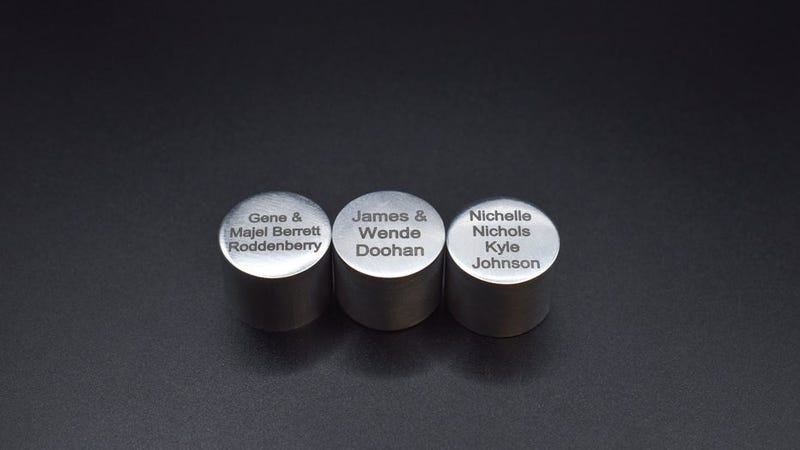
Among those being memorialized are renowned science fiction writer Arthur C. Clarke, whose DNA is included in the Celestis payload, and several original Star Trek actors, along with the show’s creator, Gene Roddenberry (but their remains—trace amounts of ashes—will stay in space). Elysium Space’s Lunar Memorial service includes capsules containing the cremated ashes of individuals, offering families a unique, if perhaps indulgent, way to honor their loved ones.
We’re in the midst of preparing a full-fledged article on this aspect of the Peregrine mission, so stay tuned for that in the coming days.
Cryptoshenanigans
And for better or worse, the Moon mission will include some cryptocurrency-themed payloads courtesy of BitMex and Bitcoin Magazine. The BitMex project involves a physical Bitcoin etched with a private key, and it’ll remain on the lunar surface “awaiting retrieval by future explorers,” the crypto platform company says. The mission will also carry the Genesis Block’s text—the inaugural block in the Bitcoin blockchain—to the Moon. This tribute to cryptocurrency protocol will be displayed on a metal plate, presenting the block’s raw hexadecimal data, alongside a hologram of the Bitcoin Magazine logo.
So, we choose to go to the Moon, not just for scientific discovery and exploration, but also to drop off a bunch of cool and wacky stuff. It’s a new era, no doubt, one now limited only by the amount of tools, toys, and junk we can squeeze into a tiny lander.
